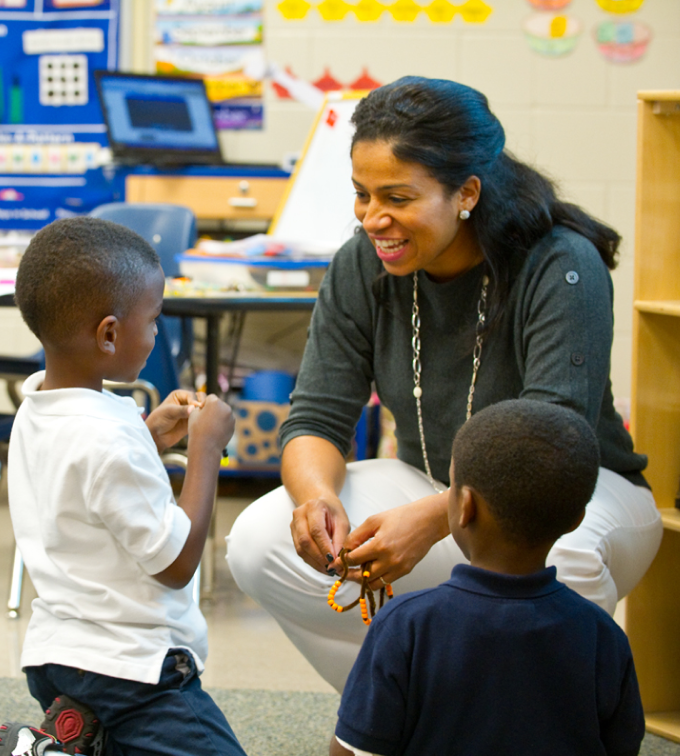Expert Tutors Offering Primary Science Tuition Singapore for All Grades
Expert Tutors Offering Primary Science Tuition Singapore for All Grades
Blog Article
A Comprehensive Overview to the Numerous Learning Methods in Key Scientific Research Instruction
The expedition of varied discovering approaches in main science guideline offers an opportunity for instructors to enhance student engagement and understanding substantially. By examining hands-on learning techniques, inquiry-based approaches, and collaborative methods, we can determine efficient practices that cater to numerous learning designs. Furthermore, the assimilation of modern technology and differentiated direction plays an essential role in fostering a comprehensive setting. The question remains: how can these techniques be properly carried out in the class to maximize their influence? The solution depends on a better evaluation of each approach and its ramifications for teaching scientific research.

Hands-On Understanding Methods
Hands-on knowing strategies play a pivotal duty in main scientific research guideline, engaging pupils in energetic exploration and testing. These techniques permit students to communicate directly with products and sensations, cultivating a much deeper understanding of clinical ideas. By making use of manipulatives, versions, and real-life experiments, instructors develop a setting where pupils can observe, assume, and test their concepts.
Such strategies not just improve understanding however likewise grow vital thinking and problem-solving abilities. When students join activities like building easy machines, planting seeds, or performing chemical responses, they are motivated to ask questions and look for responses via their own monitorings. This experiential method helps to debunk complex scientific principles, making them a lot more relatable and available.
Additionally, hands-on discovering advertises collaboration amongst peers, as students commonly operate in teams to perform experiments or share searchings for. This synergy not just enriches their knowing experience however likewise develops important social abilities. Eventually, integrating hands-on strategies in key scientific research instruction fosters a long-lasting love of understanding and interest regarding the natural world, laying a strong structure for future scholastic searches in scientific research and beyond.
Inquiry-Based Knowing
Inquiry-based understanding is an instructional method that encourages pupils to ask questions, investigate phenomena, and create their own understanding of clinical principles. This approach changes the emphasis from standard teacher-led instruction to a much more student-centered experience, where students take the initiative in their instructional journey. By fostering inquisitiveness, inquiry-based understanding advertises deeper involvement with the material, allowing trainees to explore topics in a meaningful context.
In method, this strategy commonly entails hands-on experiments, monitorings, and critical thinking activities that align closely with the scientific method. Pupils are encouraged to create theories, style examinations, and evaluate data, which cultivates crucial abilities such as analytical and problem-solving reasoning. The duty of the instructor in this framework is to help with exploration, directing students with the inquiry procedure while motivating independent idea and collaboration.
In addition, inquiry-based knowing nurtures a feeling of possession over the knowing procedure, encouraging pupils to pursue understanding proactively. This method not just improves understanding of scientific ideas but also promotes a lifelong love for knowing, gearing up students with the abilities necessary to navigate a significantly complicated world.
Collaborative Knowing Approaches
Joint understanding techniques encourage trainees to engage in purposeful communications with peers, cultivating a common duty for their instructional outcomes. In primary scientific research direction, these techniques encourage students to work together to check out clinical ideas, fix problems, and perform experiments (primary science tuition Singapore). By taking part in group activities, students can leverage varied viewpoints, enabling richer understanding and retention of clinical understanding
One key element of collective knowing is the emphasis on interaction abilities. Trainees need to express their ideas, listen actively to others, and work out ideas, all of which are crucial competencies in both real-world and academic contexts. This social communication not only enhances their understanding of clinical concepts yet also promotes synergy and conflict resolution abilities.
Moreover, collaborative understanding typically causes increased motivation and engagement. They are extra most likely to take ownership of their understanding journey when trainees see the value of their payments within a team. Teachers can facilitate this procedure deliberately organized group tasks that align with educational program objectives while giving support on effective collaboration strategies. Generally, incorporating collective knowing techniques in primary science instruction cultivates a dynamic discovering setting that prepares students for future scholastic and social obstacles.
Innovation Integration in Science
The combination of modern technology in key science guideline improves learning experiences by giving innovative tools and sources that support various training methods, including joint understanding - primary science tuition Singapore. Making use of electronic platforms, simulations, and interactive applications allows trainees to engage deeply with scientific concepts, assisting in pop over to these guys a more hands-on technique to understanding
Digital laboratories, as an example, make it possible for students to perform experiments safely and efficiently, promoting inquiry-based knowing. These tools can imitate real-world clinical situations, allowing pupils to envision complex processes that would certainly be tough to replicate in a standard classroom setting. Modern technology promotes communication and collaboration amongst trainees, as they can share findings and function with each other on projects through on-line systems.
Additionally, multimedia discussions and educational videos can improve lessons by accommodating varied discovering styles, making abstract ideas more available. Information evaluation tools also encourage pupils to gather and analyze scientific data, enhancing vital thinking abilities. Overall, the tactical unification of technology in primary science guideline not just improves involvement but also prepares students for a technologically advanced society, equipping them with crucial skills for future clinical endeavors.
Separated Instruction Techniques
Separated instruction techniques are essential for attending to the diverse requirements of students in primary science education and learning. These approaches enable instructors to tailor their teaching methods to suit varying capabilities, passions, and learning styles within the classroom. By utilizing set apart instruction, instructors can produce a comprehensive setting that fosters engagement and enhances understanding of scientific ideas.
One reliable approach is to use flexible grouping, which enables trainees to work together with peers at similar skill degrees or with differing viewpoints. This method motivates peer understanding and advertises critical reasoning. Furthermore, using choices in projects can encourage students, permitting them to select jobs that reverberate with their interests while still satisfying curricular goals.
Moreover, including tiered assignments is another valuable method. Deliberately jobs with differing levels of complexity, teachers can make certain see this website that all pupils are suitably challenged, despite their efficiency. Using formative evaluations to evaluate comprehending additional allows teachers to change their educational approaches dynamically, ensuring that each student gets the support they require.
Inevitably, applying set apart guideline techniques in primary scientific research education not just boosts pupil discovering results however also cultivates a passion for scientific research, preparing trainees for future academic searches.

Final Thought
In recap, effective key science instruction requires a complex approach that encompasses hands-on learning, inquiry-based techniques, and joint strategies. The integration of modern technology and differentiated guideline even more deals with varied knowing designs, cultivating a setting favorable to exploration and crucial reasoning. By executing these methods, instructors can improve student interaction and comprehension, ultimately nurturing a lifelong enthusiasm for scientific research and inquiry. Such extensive methodologies are important for developing educated and interested future researchers.
The exploration of varied discovering approaches visit the site in key scientific research instruction provides a chance for instructors to improve pupil involvement and comprehension significantly.Hands-on knowing methods play a pivotal duty in key scientific research instruction, engaging trainees in energetic expedition and experimentation.Inquiry-based discovering is an instructional approach that encourages students to ask questions, check out sensations, and construct their own understanding of clinical ideas.Collective knowing strategies empower pupils to engage in meaningful communications with peers, fostering a common obligation for their academic outcomes. On the whole, including collaborative learning techniques in primary scientific research guideline grows a dynamic knowing environment that prepares trainees for future scholastic and social difficulties.
Report this page